Face Mill vs. End Mill: A Complete Comparison Guide
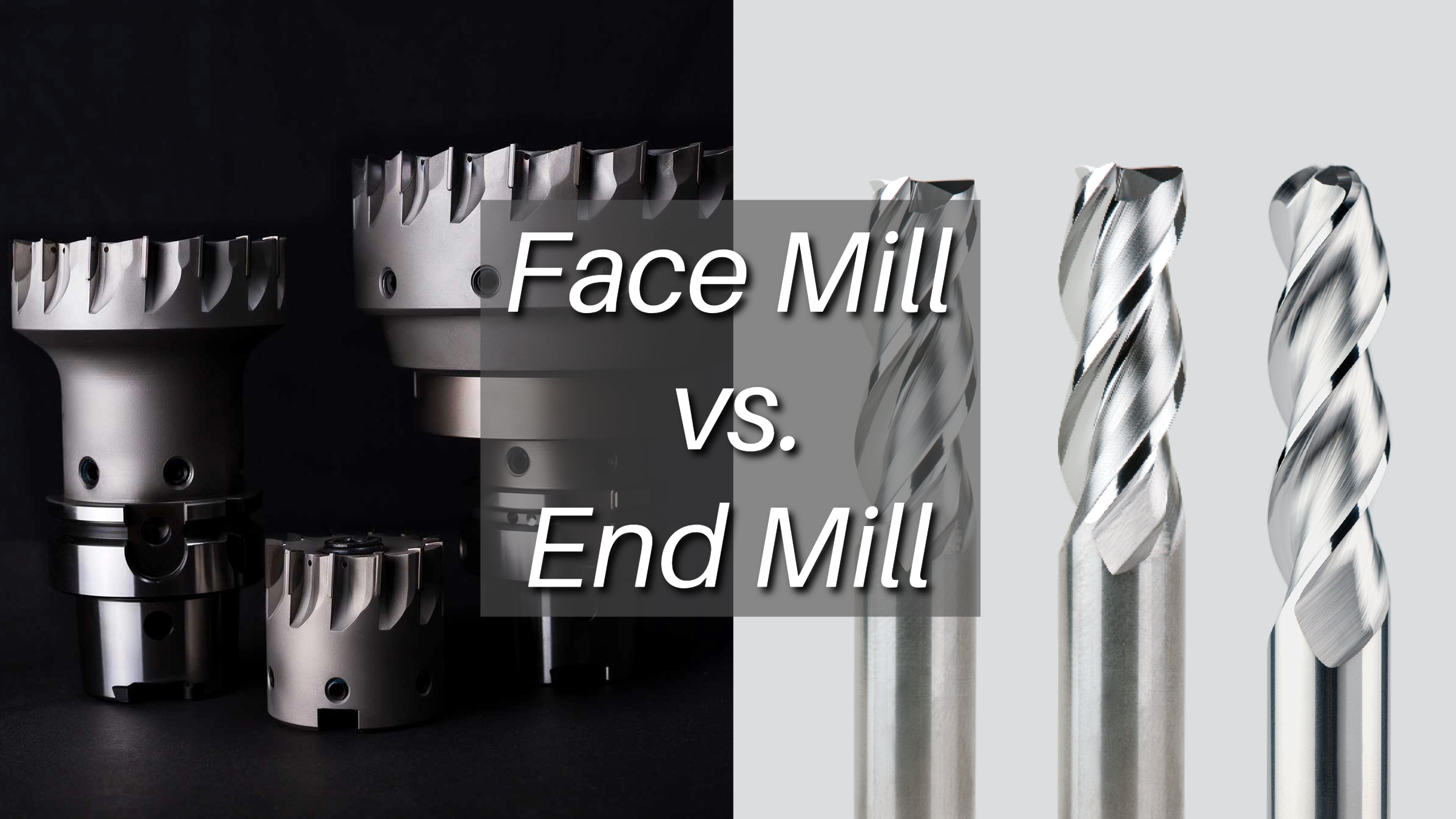
Understanding Face Mill vs. End Mill is essential in order to choose the milling tool that is best suited for your project.
Introduction
Face mills and end mills are among the most commonly used tools in CNC machining. Selecting the appropriate milling tool can significantly impact the efficiency and quality of the final product.
Understanding Face Mill
What is Face Mill
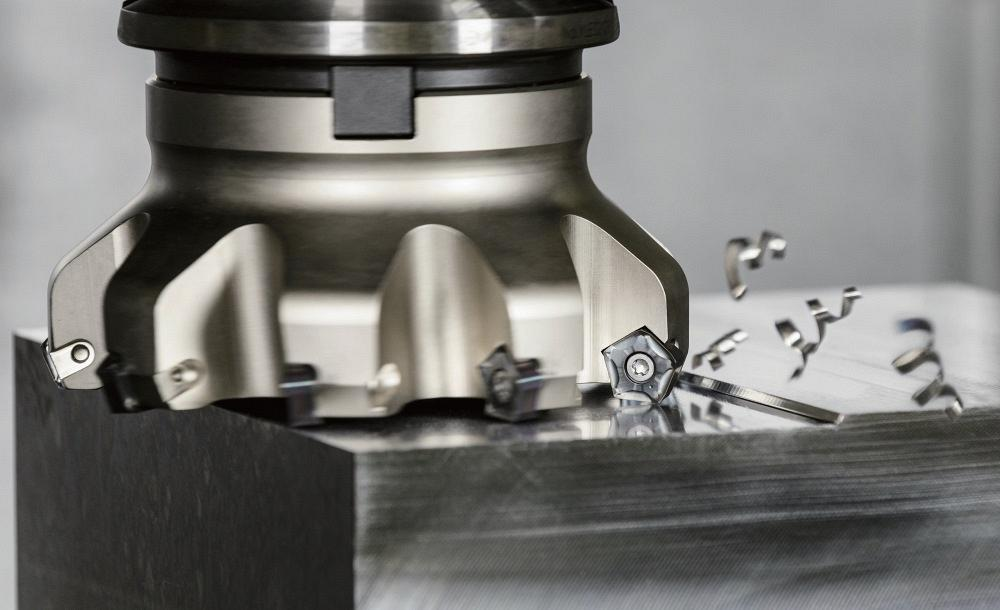
Source: canadianmetalworking.com
A face mill is a rotating cutting tool used primarily for machining large, flat surfaces perpendicular to the cutter's axis.
It is designed to remove material quickly from a workpiece's surface, producing a smooth and even finish.
Characteristics of Face Mill
- Cutting Diameter: Face mills typically have a larger cutting diameter than end mills. This larger diameter allows them to cover a greater surface area in a single pass, making them highly efficient for machining broad, flat surfaces.
- Cutting Edges: Face mills are equipped with multiple cutting edges or inserts. These inserts can be easily replaced when they become worn, ensuring continuous and effective cutting performance without the need to replace the entire tool.
- Usage: Face mills are ideal for high-speed machining operations. Their design and cutting capabilities make them perfect for quickly removing material from large, flat surfaces, providing an efficient means of achieving a smooth finish.
Understanding End Mill
What is End Mill
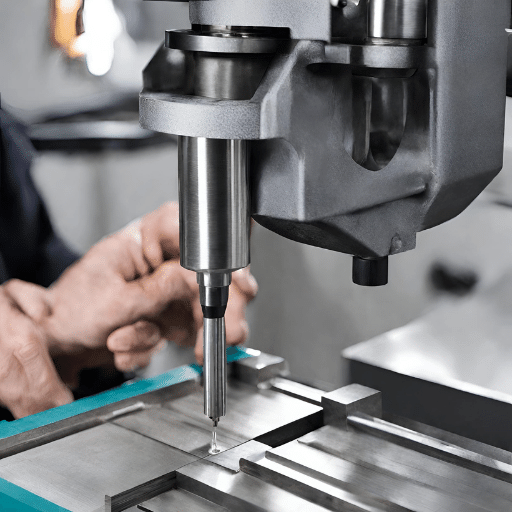
Source: ssendmill.com
An end mill is a type of milling cutter designed for a variety of milling applications, such as slotting, profiling, and contouring.
It features cutting edges on the end and along the sides, making it versatile for different machining tasks.
Characteristics of End Mill
- Cutting Geometry: End mills feature a helical cutting edge and are capable of cutting on the sides, ends, and face of the material. This geometry allows for precision cutting and detailed work on complex shapes.
- Versatility: Available in a range of shapes and sizes, end mills can be tailored to specific tasks. They come in various end styles, such as square, ball, and corner radius, to accommodate different milling needs.
- Applications: End mills are suitable for a wide range of milling operations. Their precision and flexibility make them ideal for tasks that require detailed and intricate machining, such as creating slots, pockets, and complex contours.
Face Mill vs. End Mill: Properties
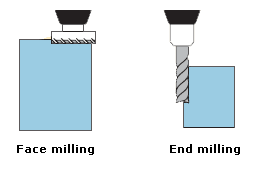
Source: enerpac.com
| Aspect | Face Mill | End Mill |
|---|---|---|
| Cutting Direction | Primarily cuts on face | Can cut in all directions |
| Chip Formation | Generates larger chips | Produces smaller chips |
| Tool Engagement | Engages larger material | Engages less material |
| Helix Angle | Typically no helix angle | Varies with helix angle |
| Surface Finish | Produces smoother finish | Capable of detailed finishes on complex shapes |
Cutting Direction
- Face Mill: Primarily cuts on the face of the material. It is best suited for producing flat surfaces.
- End Mill: Can cut in all directions, including side, end, and face. This makes it ideal for versatile milling operations.
Chip Formation
- Face Mill: Generates larger chips due to the extensive cutting area engaged with the material. This allows for efficient material removal in high-volume operations.
- End Mill: Produces smaller chips, which are easier to manage and better for detailed work. The smaller chip size also aids in maintaining precision during intricate milling tasks.
Tool Engagement
- Face Mill: Engages a larger portion of the material in each pass, which is ideal for quickly removing large volumes of material from flat surfaces.
- End Mill: Engages less material per pass, providing greater control and precision. This makes it better suited for detailed and intricate milling tasks.
Helix Angle
- Face Mill: Typically does not have a helix angle. Its cutting action is more straightforward.
- End Mill: Comes with varying helix angles, affecting the cutting action and chip evacuation. A higher helix angle can result in smoother cutting and better surface finish.
Surface Finish
- Face Mill: Produces a smoother finish on large, flat surfaces. Its design ensures consistent contact with the workpiece surface.
- End Mill: Capable of producing detailed finishes on complex shapes and contours. The versatility of end mills allows for high-quality surface finishes in intricate areas.
Face Mill vs. End Mill:Process
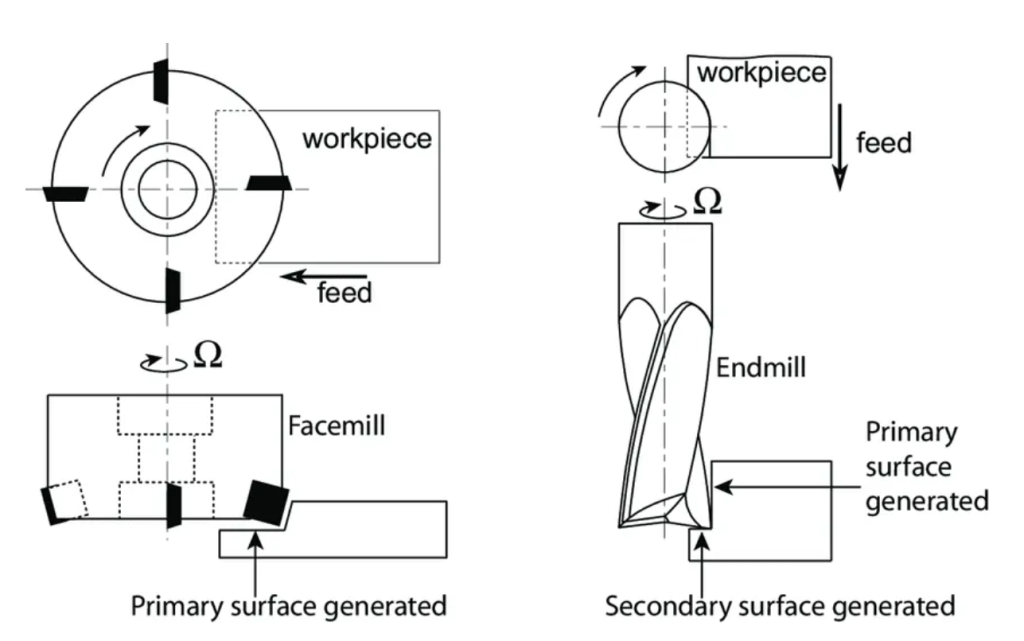
Source: enerpac.com
Machining Process of Face Mill
- Setup: Face mills need rigid setups for stability and accuracy due to their size and cutting forces, ensuring quality surface finishes.
- Operation: Ideal for high-speed, high-feed operations on horizontal mills, efficiently removing material, especially on large, flat surfaces.
- Applications: Effective for initial flat surface creation, particularly in rapid roughing operations.
Machining Process of End Mill
- Setup: Versatile for both horizontal and vertical mills, requiring precise alignment for accuracy, often optimized with CNC machines.
- Operation: Enables diverse tasks like slotting, profiling, and contouring, offering multi-directional cutting capabilities for complex shapes.
- Applications: Suitable for roughing and finishing, capable of intricate shaping and pocketing for various machining needs.
End Mill vs. Face Mill: Pros and Cons
| Aspect | End Mill | Face Mill |
|---|---|---|
| Pros | ||
| Versatility | Wide range of operations | Efficient for large surfaces |
| Precision | High-precision machining | Excellent surface finish |
| Availability | Various shapes and sizes | Replaceable inserts |
| Cons | ||
| Tool Wear | Wears out quickly | Requires rigid setup |
| Material Removal Rate | Slower material removal | Limited to flat surfaces |
| Cost | Frequent sharpening needed | Higher initial investment |
Pros and Cons of End Mill
Pros
- Versatility: End mills perform various milling operations like slotting, profiling, and contouring, suitable for diverse applications.
- Precision: Designed for intricate work with multi-directional cutting capabilities, ensuring high-precision machining.
- Availability: Comes in numerous shapes, sizes, and materials, enhancing effectiveness for different tasks.
Cons
- Tool Wear: End mills wear out quickly, especially on hard materials or at high speeds, requiring frequent maintenance.
- Limited Material Removal Rate: Engages less material per pass than face mills, resulting in slower material removal rates for large-scale operations.
Pros and Cons of Face Mill
Pros
- Efficiency: Highly efficient for machining large, flat surfaces, reducing machining time with larger cutting diameters.
- Surface Finish: Capable of producing excellent surface finishes on flat surfaces, ideal for finishing operations.
- Replaceable Inserts: Utilizes replaceable cutting inserts, extending tool lifespan and reducing downtime for replacement.
Cons
- Limited to Flat Surfaces: Primarily designed for flat surface machining, not suitable for detailed work or complex geometries.
- Machine Rigidity Requirement: Requires rigid machine setups due to larger size and cutting forces, limiting use in less robust machines.
- Higher Initial Investment: Initial cost may be higher compared to end mills, especially for models with replaceable inserts, impacting budget considerations.
End Mill vs. Face Mill: Factors to Consider When Choosing
Material Type and Hardness
- End Mill: Suitable for a wide range of materials and hardness levels. Can handle softer materials as well as harder alloys with appropriate tool coatings.
- Face Mill: More efficient for softer materials due to higher material removal rates. May struggle with very hard materials unless equipped with specialized inserts or coatings.
Machine Rigidity
- End Mill: Requires less rigidity in the machining setup due to smaller cutting forces compared to face milling. Can be used on a wider range of machines, including those with less robust structures.
- Face Mill: Requires a rigid machine setup to withstand the high cutting forces involved in face milling. Larger machines with sturdy construction are preferred to ensure stability and accuracy.
Material Removal Rate
- End Mill: Generally lower material removal rates compared to face milling due to smaller cutting diameters and fewer cutting edges. Ideal for precision machining where speed is not the primary concern.
- Face Mill: Offers higher material removal rates, making it suitable for rapid stock removal on large, flat surfaces. Ideal for roughing operations where efficiency is paramount.
Machining Purpose
- End Mill: Preferred for intricate machining tasks requiring precision and detailed features. Suitable for operations such as slotting, profiling, and contouring.
- Face Mill: Best suited for roughing operations and machining large, flat surfaces efficiently. Ideal for tasks where speed and material removal rate are priorities.
In conclusion, consider material properties, machine capabilities, and machining goals when choosing between end mills and face mills.
Select the tool that best aligns with your project requirements for optimal efficiency.
Conclusion
Choosing between a face mill and an end mill depends on your specific milling requirements. Understanding the differences in their design, properties, and applications will help you make an informed decision, ensuring optimal performance and efficiency in your machining operations.
Explore Different CNC Machining with Unionfab
Explore a wide range of CNC machining services at Unionfab to meet all your manufacturing needs, including CNC milling. We offer the solutions to help you achieve even better results in your projects.
For more details, feel free to reach out to us via our Contact Us page.


